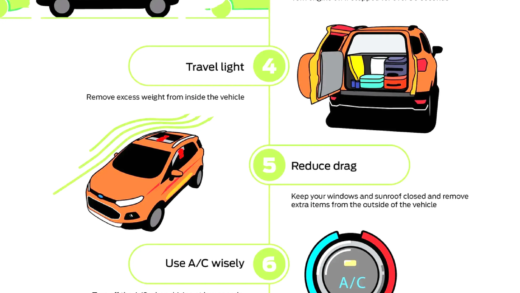This article clarifies misconceptions about speed traps, explaining their legality and purpose. It debunks myths surrounding their operation, ensuring drivers understand how to navigate speed traps safely and effectively.
Speed Traps Explained: What They Are and How They Work
Speed traps are a common tool used by law enforcement to monitor and enforce speed limits on roads. Essentially, they are locations where police officers use radar or laser devices to measure the speed of passing vehicles. When a driver exceeds the posted speed limit, they can be stopped and issued a citation. Understanding how speed traps work can help drivers remain compliant and avoid penalties for speeding.
Speed traps typically involve the following components:
- Location: Speed traps are often set up in areas where speeding is a concern, such as near schools, residential neighborhoods, or accident-prone zones.
- Detection Technology: Law enforcement uses various technologies, including radar guns and laser speed detectors, to measure vehicle speeds accurately.
- Enforcement: Officers may be stationed nearby to pull over speeding vehicles, or they may use automated systems to capture speed violations.
One common misconception is that speed traps are merely revenue-generating schemes for local governments. While they do generate fines, the primary goal is to enhance road safety. By discouraging speeding, law enforcement aims to reduce accidents and fatalities on the roads.
To protect against getting caught in a speed trap, drivers should:
- Be aware of speed limits and adjust their speed accordingly.
- Keep an eye out for speed limit signs, especially when entering new areas.
- Use technology, such as GPS devices, which often include speed limit alerts.
In summary, speed traps serve as an important mechanism for maintaining road safety. Being informed about how they operate can help drivers navigate roads more safely and avoid unnecessary penalties.
The Legality of Speed Traps: Are They Enticing or Legal?
Speed traps are legal in many jurisdictions, but their legality often raises questions among drivers. The legality of speed traps is primarily based on the laws governing traffic enforcement in each state or country. In general, law enforcement agencies must follow specific guidelines to ensure that speed traps are not deemed entrapment or unfair practices.
In most places, speed traps must meet certain criteria:
- Signage: Many states require visible speed limit signs and appropriate warnings about speed enforcement. This ensures that drivers are informed of the speed limits.
- Proper Use of Technology: Law enforcement must use calibrated and certified radar or laser devices to measure speed accurately. Misuse of faulty equipment can render the evidence inadmissible in court.
- Location: Speed traps should be set up in areas where speeding is a known issue, such as near schools or high-traffic zones. Setting traps in unexpected locations can lead to claims of unfair practices.
Despite their legality, some argue that speed traps can be enticing for law enforcement agencies due to the revenue generated from fines. Critics argue that this can lead to unethical practices, such as prioritizing ticket quotas over genuine road safety. However, proponents claim that speed traps help reduce speeding and improve overall traffic safety.
In conclusion, while speed traps are generally legal, their implementation must adhere to specific guidelines to ensure fairness. Drivers should stay informed about local traffic laws to avoid penalties and understand the rationale behind speed enforcement.
Common Misconceptions: Myths About Speed Traps Debunked
Speed traps often come with a variety of misconceptions that can mislead drivers. One prevalent myth is that speed traps are illegal or considered entrapment. In reality, speed traps are legal in many jurisdictions as long as they follow specific guidelines. Law enforcement agencies use them to enhance road safety, not merely to generate revenue.
Another common belief is that speed traps are always hidden and unfair. While some may argue that certain setups are deceptive, most speed traps are located in areas where speeding is a known issue, such as near schools or high-traffic zones. This transparency is intended to inform drivers and encourage compliance with speed limits.
Many people also think that speed traps are only about catching speeders. However, their ultimate goal is to deter dangerous driving behaviors, which in turn can lower accident rates. The evidence used in speed traps, including radar and laser readings, is designed to be accurate and reliable, helping to ensure that penalties for speeding are justified.
Some drivers believe that getting caught in a speed trap is purely a matter of bad luck. In truth, there are proactive measures to protect against being ticketed. By adhering to speed limits, using GPS alerts, and staying informed about local traffic laws, drivers can minimize their chances of encountering speed traps. Understanding these myths allows drivers to navigate the roads more safely and confidently.





Comments are closed.